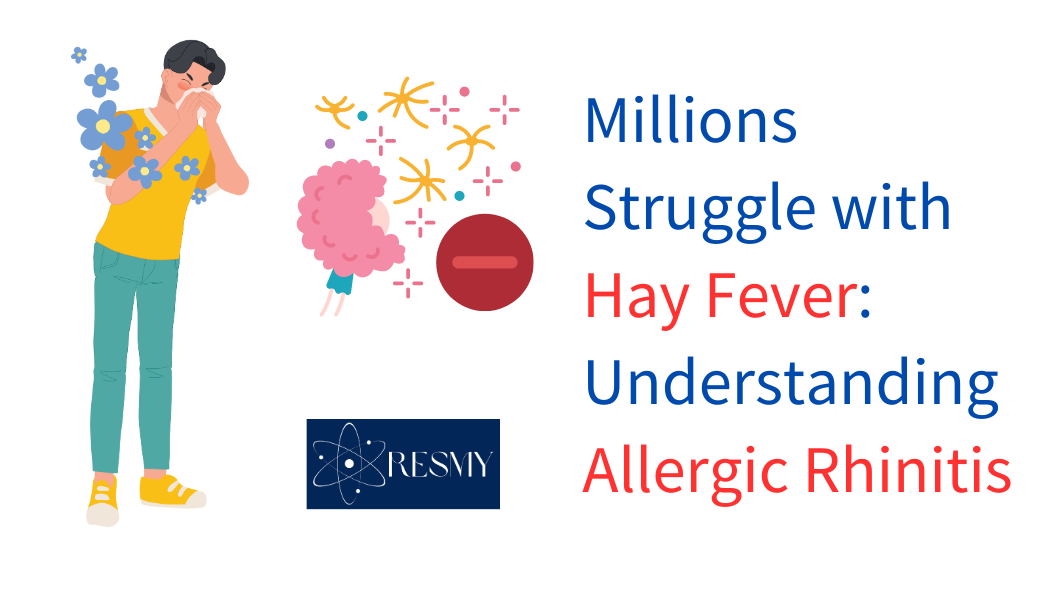Highlighted Post
Millions of poeple suffer from allergic rhinitis, more commonly known as hay fever. This condition can significantly impact daily life, causing a runny nose, congestion, and itchy eyes. This article explores the prevalence, symptoms, and treatment options for allergic rhinitis.
Widespread Impact: 15% of the US Population Affected
An estimated 15% of the U.S. population, roughly 50 million individuals, experience allergic rhinitis. This widespread condition can disrupt sleep, decrease productivity, and reduce overall quality of life. Additionally, allergic rhinitis is often associated with other health problems, such as asthma, eczema, and chronic sinusitis.
Understanding the Cause: When Allergens Invade
Allergic rhinitis occurs when the body’s immune system overreacts to harmless substances like pollen, dust mites, or pet dander. These allergens trigger an inflammatory response in the nasal passages, leading to the characteristic symptoms.
Symptoms: More Than Just a Sniffle
Allergic rhinitis typically presents with a constellation of symptoms, including:
- Nasal congestion: A stuffy or blocked nose
- Rhinorrhea: A runny nose
- Postnasal drip: Drainage of mucus down the back of the throat
- Sneezing
- Itchy eyes, nose, and throat
Studies have shown that rhinorrhea and nasal congestion are the most prevalent symptoms, affecting over 90% of people with allergic rhinitis.
Differentiating Allergic from Non-Allergic Rhinitis
It’s important to distinguish between allergic and non-allergic rhinitis, as treatment approaches differ. Patients with non-allergic rhinitis primarily experience congestion and postnasal drip, often accompanied by sinus pressure, ear issues, and eustachian tube dysfunction. Additionally, allergy testing will be negative for specific allergens in non-allergic rhinitis cases.
Severity and Duration: Classifying Allergic Rhinitis
The frequency and duration of symptoms help categorize allergic rhinitis:
- Intermittent: Symptoms occur less than four consecutive days per week or less than four consecutive weeks per year.
- Persistent: Symptoms occur more often than four consecutive days per week and for more than four consecutive weeks per year.
Prevention is Key: Avoiding Triggers
The best approach to managing allergic rhinitis often involves allergen avoidance. Identifying and minimizing exposure to triggers can significantly reduce symptoms. Consulting with an allergist can be crucial for pinpointing specific allergens.
Treatment Options: Tailored Relief
Treatment for allergic rhinitis depends on the severity and frequency of symptoms. Here’s an overview of common options:
- Second-generation H1 antihistamines: These medications block the action of histamine, a chemical released during an allergic reaction. Examples include cetirizine (Zyrtec), fexofenadine (Allegra), desloratadine (Claritin), and loratadine (Claritin-D).
- Intranasal antihistamines: Sprays delivered directly to the nose provide localized relief. Examples include azelastine (Astelin) and olopatadine (Patanase).
- Intranasal corticosteroids: These sprays reduce inflammation in the nasal passages. Examples include fluticasone (Flonase), triamcinolone (Nasacort), budesonide (Rhinocort), and mometasone (Elocon).
Doctors typically recommend second-generation H1 antihistamines or intranasal antihistamines for mild intermittent or mild persistent allergic rhinitis. For moderate to severe persistent cases, intranasal corticosteroids might be the first-line therapy, potentially combined with an intranasal antihistamine.
In contrast, non-allergic rhinitis treatment usually involves an intranasal antihistamine alone or in combination with an intranasal corticosteroid.
Conclusion: Managing Hay Fever for Optimal Living
Allergic rhinitis, while widespread, can be effectively managed. By understanding the causes, symptoms, and treatment options, individuals can find relief and experience improved quality of life. Consulting with a healthcare professional is crucial for proper diagnosis and personalized treatment recommendations.
Reference: here
Other Topics: Medicine and Health Science, Natural Science, Agricultural Science, Engineering & Technology, Social Sciences & Humanities

